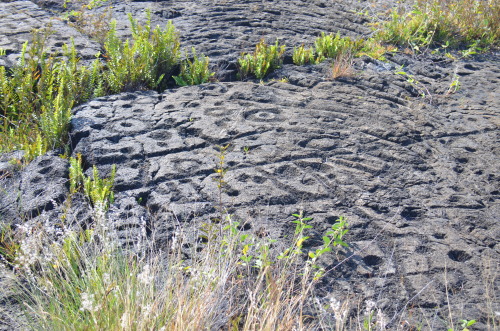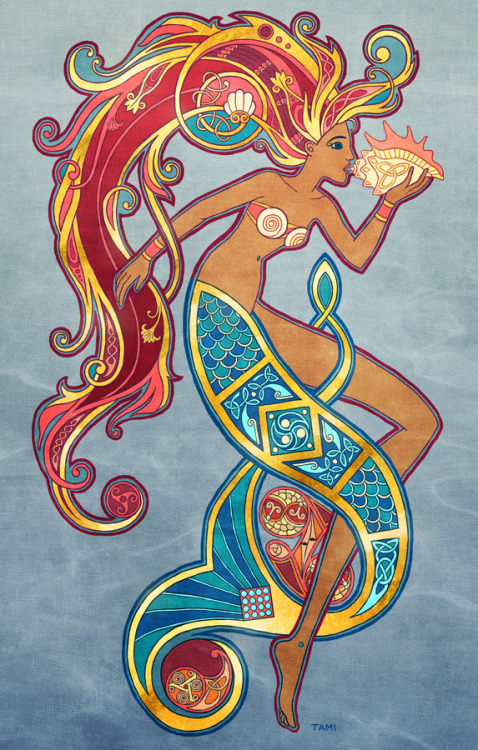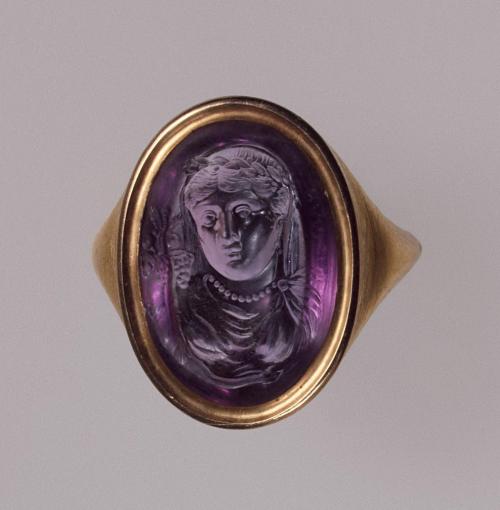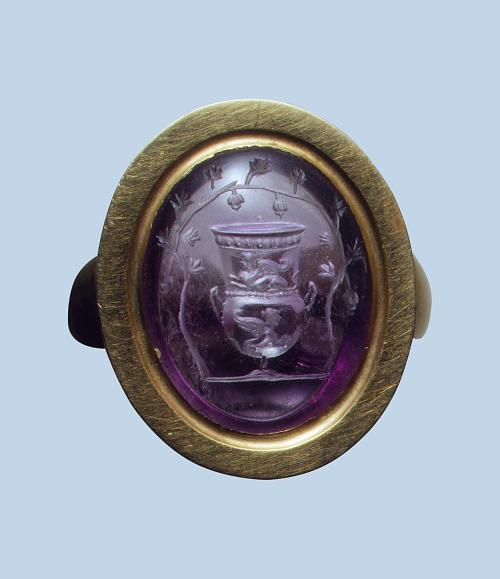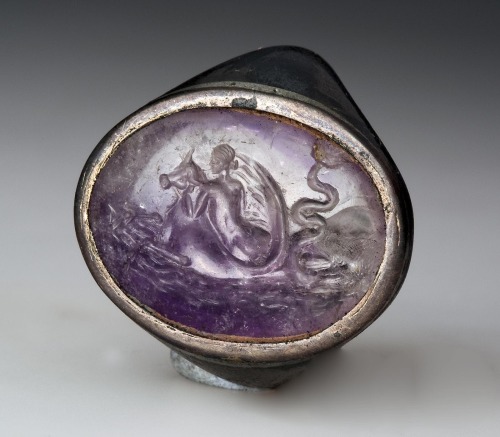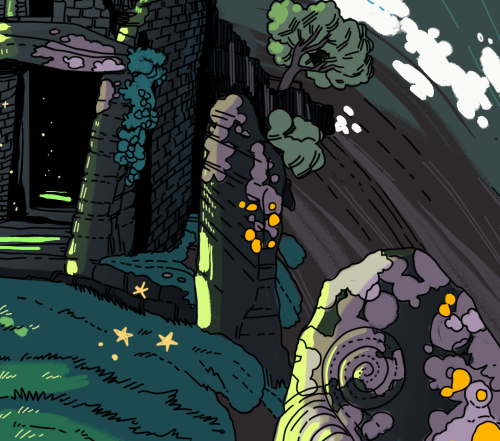#ancient

First Light Of Dawn Seeping Into Overgrown Tomb- Jesse Jacobi; 2018
Terracotta Warrior complex
The world famous Terracotta Warriors (otherwise known as terracotta army) can be found at the Ancient Capital of Xian. Each warrior is unique because every terracotta clay statue is modeled after a different soldier. The soldier’s had to model for the sculpture or face death. The Terracotta Warriors were an infamous rumor along with other claims that the Ch-in Dynasty (where the word China comes from) created a tomb complex under a mountain that contains China in miniature with molten lead rivers and all the famous sites of ancient China. When unearthed, this will be the archeological wonder of the 21st century. This is one of the China activities that you will not want to miss.
See more at wanderingtrader.com
#asia #china #xian #ancient #terracottawarrior #statues #thingstodoinchina
Post link
This week, I’m going to be making a quick and easy rice pudding dessert, recorded in a 14th century Neapolitan cookbook - the Cuoco Napoletano! Rice began being used in medieval Europe intensively around the 9th or 10th centuries AD - though evidence for it’s cultivation in the Eastern Mediterranean date back to Alexander the Great’s conquests into Asia.
In any case, let’s now take a quick look at The World That Was! Follow along with my YouTube video, above!
Ingredients (makes 4 portions)
2 cups rice
4 cups almond milk
1 cup sugar
saffron
Method
1 - Wash and Cook Rice
To begin with, we need to cook some rice. I used basmati rice, but Arborio or other, fatter-grained rice would have been used in antiquity as well! Begin by washing a couple of cups of rice in some cold water. Move the grains around with your hands, to get rid of excess starch. When the water runs clear, place your rice in a pot, and fill up with cold water until the rice is just about submerged.
Place your pot over a high heat until the water boils. Let everything cook until the rice is almost done - but not quite ready. Take it off the heat and let it cool down.
2 - Prepare Saffron
Next, rehydrate your saffron a little. Do this by letting it sit in some boiling water for a few minutes. Saffron is VERY expensive, so you can of course skip this step - it’s really only to add colour, and a slight woody taste - to the finished dish!
3 - Prepare the Milk
While your rice is cooling, go pour about 4 cups of almond milk into a saucepan, along with a cup’s worth of sugar. Bring this to a boil over a medium heat. The original recipe tells you how to make almond milk as well, by combining ground almonds with water. Keep your sugar and milk mixture stirring occasionally, while you wait for it to boil.
4 - Combine Ingredients
When the almond milk is at a rolling boil, turn the heat down to low and let it simmer away. Add in your cooled rice back into the pot, along with your rehydrated saffron! Mix everything together, and let it cook for another ten to twenty minutes. Or until your rice is lovely and soft, and stays in a soft mound when you pile it up with a spoon.
Serve up either warm or at room temperature, and dig in!
The finished dish is quite simple, yet very sweet! The three main ingredients - rice, almonds, and sugar - would have been readily available in many medieval Mediterranean markets - particularly in those markets at the conflux of trade routes, such as along the Italian coast.
The original recipe also mentions that other kinds of milk can be used when making this - such as goat milk. However, it neglects to mention that if you use those kinds of milk, stirring it when it’s coming to a boil could cause curds to form - making it more like a kind of cheese, rather than pudding.
This week, I’m going to be making a simple party dish - recorded by a Syrian writer in the 13th century! Though the dish is described very literally as “gourd dish”, it is, in fact, a delightfully savoury and crunchy snack that can be served at parties alongside a simple yet nutty dipping sauce! Thanks again to Charles Perry for the translation of the original Arabic!
In any case, let’s now take a look at The World That Was! Follow along with my YouTube video, above! If you like my recipes, consider checking out my Patreon!
Ingredients (serves 4)
1 - 2 courgettes / zucchinis (or 1 bottle gourd / calabash)
½ cup walnuts (finely ground)
½ cup tahini paste
bunch of finely chopped mint
1 tbsp ground coriander
1 tbsp ground cumin
lemon juice (to taste)
honey (to taste)
olive oil / sesame oil (for frying)
Method
1 - Prepare Ingredients
To begin making this dish, we need to grind up about a half a cup of walnuts into a fine powder, along with about a tablespoon of cumin seeds, and a tablespoon of coriander seeds. Then, finely mince some fresh mint. All of these ingredients are native to the region in question, i.e. the Near East, and were used throughout history to today!
2 - Prepare Sauce
To make the sauce, simply pour about a cup and a half of tahini paste into a bowl, along with your crushed walnuts, ground cumin, and ground coriander to taste! Squeeze the juice from half a lemon, and add it to the sauce, before tossing in your chopped mint, and get to mixing! Taste this when you’re done to see how bitter it is. If it’s too dry and sour, add a bit of honey to loosen things up a little and sweeten it! Make sure you do this to taste, mind you.
3 - Prepare Gourd
When your sauce is done, we need to deal with the gourd! A common issue in antiquity is the ambiguity over the translation of “gourd” as many gourds we see today come from the New World (i.e. the Americas). However the bottle gourds (or calabash) and courgette (or zucchini) were commonly cultivated in the Mediterranean in the medieval period - with evidence for the courgette dating back to the Hellenistic Period! So for this, I’m using a courgette, as it’s easier to deal with. Slice this into thin segments, about as thin as your little finger.
4 - Fry Gourd
When you’ve cut the segments, coat them in flour, before placing them into a pan filled with sesame oil over high heat. They should foam a little, depending on the water content of your courgette. Let these fry for a minute or two, or until they’re golden brown on one side, before flipping them over and letting them brown on the other side for the same amount of time.
When they’re done, place them on some paper towels or a rack to drain off excess oil for a minute. Plate them up with some of your dipping sauce and dig in!
The finished dish is very light and crisp - and pairs wonderfully with the nuttiness of the sauce! The thinner segments act more like modern-day crisps (or chips, depending on where you’re from), and are a fantastic dish to have at any medieval parties you’re heading off to!
Today, I’m going to be recreating a recipe for a German apple pie from the Registrum Coquine - the contents of which are suited for a middle-class palette of medieval European world
In any case, let’s now take a look at The World That Was! Follow along with my YouTube video, above! Consider supporting me on Patreon if you like my recipes!
Ingredients
6 apples
2 cups flour
water
butter (or oil)
ground cinnamon
ground nutmeg
cloves (either whole or ground)
honey (if the apples are too tart)
Method
1 - Peel and Chop Apples
To begin making an apple pie, we need apples. Though the original recipe doesn’t state any particular apples, tart apples tend to make the best filling. Peel your apples, and chop them into fairly evenly-sized chunks so they cook evenly. I found that about 6 apples suited a pie fit for about four people.
2 - Prepare the Filling
When your apples are chopped, go toss some butter (or oil) into a pot, and let it melt. When it’s foaming, toss in your freshly-grated nutmeg, cinnamon, and a few cloves, and stir them around so they’re all covered in hot butter. You can, of course, crush your cloves, but I enjoy the sensation of biting into a whole clove - it’s up to you!
When your spices have cooked a little, toss in your chopped apples! Stir everything around so they’re all covered in butter and let it all cook away over a medium heat for a few minutes - until they soften and turn golden. At this point, take them off the heat and let them rest while you make your dough.
3 - Make Pie Dough
Since the original recipe assumes people know how to do this, we’re going to be using a cup or two of plain flour mixed with a little water. Add it little by little until it comes together into a cohesive dough. Knead this together until it’s smooth, and roll out using a rolling pin. Do this twice - once for the base of the pie, and twice for the lid. Roll the dough out fairly thin, as the whole pie won’t be baked for too long.
Pour some olive oil (or butter) into a pie dish, and stretch your pie dough over it, tamping it down with your knuckles into the corners.
4 - Assemble Pie
Pour the cooked apples into your pie dish, spreading it out evenly. When this is done, place your other circle of dough over the top. Crimp the edges of the two discs of dough together - it doesn’t matter if it doesn’t look too pretty! It’ll bake wonderfully, and taste delicious either way!
When your pie is ready, toss the whole thing into the centre of an oven preheated to about 180°C/356°F for about 25 minutes!
When the pie is done, take it out of the oven to cool down to room temperature before dividing up and digging in! Drizzle some honey over the slice you’re eating to really amplify it’s texture!
The finished pie is delicious and sweet, the spices forming a lovely warming sensation with each bite. The texture of the cooked apples is practically melt-in-your-mouth, and contrasts with the pie crust! As a side note, the pie crust itself - once cool - is rather tough. However the crust on the base of the pie is soaked in the juice from the apples during the cooking process, and is a much more palatable part of the pie. If I were to make this again, I’d either omit the top lid of the pie, or remove it before serving.
This week, I’m making some hard-boiled eggs in a pine nut sauce, as recorded by Apicius. This is a quick and easy recipe that would have served as a cheap but filling meal for many Romans in antiquity - requiring at least eggs, pine nuts, and garum. However, the recipe recorded by Apicius gives us a glimpse at a more middle-class meal!
In any case, let’s now take a look at The World That Was! Follow along with my YouTube video, above! If you like what you see, consider supporting me on Patreon!
Ingredients
200g pine nuts (soaked overnight in water)
4 eggs
1 tbsp honey
1 tbsp vinegar
1 tbsp garum (or fish sauce)
pepper
salt
dried lovage (or celery seeds, ground)
Method
1 - Prepare the Sauce
To begin making this recipe, we need to soak our pine nuts in some water overnight. So start making this the day before you want to eat it!
Place the soaked pine nuts into a mortar and pestle, and get to grinding. They should break down fairly easily. Grind this into a consistency you like - I enjoy a few whole pine nuts here, but you could of course make this entirely smooth!
Then, add in some pepper, and some dried lovage. This herb can be a little hard to come by, so you can of course use some celery seeds instead! They both have a similar taste profile.
On top of the seasonings, add a tablespoon of honey, a tablespoon of vinegar, and a tablespoon of garum - the staple of Roman cuisine! Garum is a fermented fish sauce, which appears frequently in Roman recipes, but is difficult to come by today - mainly because the method used to make it has been replaced by more sanitary methods - but Vietnamese fish sauce works well as a substitute! Mix everything together until it’s well combined. Don’t be dissuaded by the addition of fish sauce here! It won’t actually have a fishy taste!
2 - Boil Eggs
Next we need to do the most technically challenging part of this recipe: boiling some eggs. Place four eggs into a saucepan and fill it up with cold water until the eggs are just submerged. Place this pot over a high heat and let everything boil for 3-5 minutes.
When the eggs are cooked to your liking, shock them by dropping them into some very cold water, and peel them.
Cut the eggs in half and arrange them in a fancy pattern in a bowl. Onto these eggs, spoon a little bit of your sauce. Eat at room temperature and dig in!
The finished dish is a wonderfully savour treat! The sauce has a deep, meaty flavour thanks to the garum and pine nuts, with a warm background due to the addition of pepper!
Though I hard-boiled these eggs, it is likely that they were served soft-boiled as well - the yolk mixing with the sauce to form a rich luxurious sauce in the bowl!
Although I used chicken eggs here, the Romans would have most likely made use of pigeon/dove eggs, or other wildfowl (such as quail or duck). Ostrich eggs from North Africa may have also been used! Although these would have been reserved for only the most extravagant events in Rome - given the rarity of ostriches within the city normally.
Apollon in the building! (or shall I say the pantheon? I’ll go home)
I am so glad that I did a redesign for him and Artemis! I already had designs for them. They stayed the same for 3 years I think. But I wasn’t quite satisfied with them, because they didnt really look like twins. I made them as different from eachother as sun and moon, but I didnt like it anymore because of that. I’ll explain my vision on them more when I finish Artemis (she’s up next, and I am really happy with her design so far, so I cant wait to show you guys!). I’ll also do a comparison of the old and new designs. So keep an eye out for that!
Apollo: Son of Zeus, twin brother of Artemis. God of music, healing, light (sun) and truth, prophecy and oracles.
You’ll probably see a lot of ‘green flames’ with him. It is part of my vision on him as ‘the God of prophecy and oracles’. I’d like to pay as much attention on it as him being ‘the God of light (the sun)’
- From my own (greek gods) project: working title currently Theoi
- Apollon, one of the twelve Olympians
- Follow me on instagram and tumblr @pixielisje
Post link
The Goddess Fortuna
Krater and Vine
Abduction of Europa
- Ancient Roman carved amethyst intaglio rings (Hermitage Museum)
Post link
#flowers #bells #fiesta #happy #spring #mum #mamma #past #love #ancient #pure #haiku #japan #poetry #citazioni #phrases
Post link
Has anyone seen the meme floating around that claims that Julius Caesar nicknamed Cleopatra “golden mouthed” because of her oral sex skills? Also that Cleopatra was called “meriochane” in ancient Greek supposedly meaning “she who gapes for 10,000 men”?
Both of these claims sound like complete BS and I haven’t been able to find a single citation to back them up.
*Also someone should tell the 4th century CE theologian John Chrysostom (“golden mouthed”) about his name.
Eastern luxury as a corrupting influence is everywhere in Roman moralizing literature. Livy claims that the moral decline of Rome began in 187 BCE caused by the return of the Roman army from what would become the Roman province of Asia (Western Turkey). Sallust says that Sulla’s return from Asia in 83 BCE had a similar effect.
But I am very keen on amplifying the idea that by locating the foundation story of the Romans in a figure that descends from the east, the seeds of destruction are already sown within the Romans themselves. Thus, at some level, the Augustan cultural project (i.e. Vergil’s Aenied) focuses on returning to the morals of the past while simultaneously creating a narrative that undermines those exact morals.
Or maybe it is not that simple. Maybe it is an attempt to integrate eastern influence as a foundational aspect of what it means to be Roman (how would that sit for a traditionalist?!). Vergil doesn’t shy away from Aeneas’ effeminacy when he makes note of how Aeneas and the Trojans in general are dressed and styled. The offspring of Aeneas and his son Ascanius cannot escape that eastern element when they mix with the native Latins (even though Juno makes it explicit that she wants it eradicated so that none of what is Trojan infects the new mixed race, Aen. 12.820-830). Jupiter responds with commixti corpore tantum subsident Teucri, “The Trojans having been mixed only in body will remain”; a weird way of saying that the only thing Trojan about the resulting mixture will be physical. Thus Romans, according to this narrative, are at some level physically eastern.
Fresco from the “Tomb of the dancers” in Rivo di Puglia, Italy.
V century BC.Ancient Greek painting.
Currently preserved at the National Archaeological Museum in Naples, Italy.
Post link
sive mutata iuvenem figura ales in terris imitaris, almae filius Maiae, patiens vocari Caesaris ultor. Serus in caelum redeas diuque laetus intersis populo Quirini, neve te nostris vitiis iniquum ocior aura tollat; hic magnos potius triumphos, hic ames dici pater atque princeps, neu sinas Medos equitare inultos te duce, Caesar.
“Or having changed shape, do you winged one, son of nourishing Maia, imitate the young man on earth, called the unyielding avenger of Caesar? May you return to heaven at a late hour and be present for a long while with the people of Romulus, and may no swifter breeze take you, injured by our crimes. Here are rather great triumphs, here may you love to be pronounced father and first citizen, and, with you as general, not allow the unpunished Medes to ride, Caesar!” – Horace Odes1.2.41-52
Remember the time that Horace wrote that Octavian is really just Mercury in disguise??
Classics claim check: did the Romans proactively seek out children born with ambiguous genitalia—whom today we would call intersex—and kill them?
What are our sources? Livy, Pliny the Elder, and Julius Obsequens.
*To begin with, no ancient writer records the killing of a child born with ambiguous genitalia contemporary with the time they lived or are writing. All examples of the murder of intersex children are depicted as happening at some time in the past.
Infants or children who were labeled “semimas”, “androgynus”, or “hermaphroditus” are recorded among lists of ill-omens and portents that occurred during times of crisis. They are often listed alongside several other omens, for example a lamb born with a pig’s head, a pig born with a human’s head, a colt born with five feet, a child was born with an elephants head, it rained milk, it rained rocks, a cow spoke, the sky glowed red even though it was clear. (Liv. AUC XXXI.12; XXVII.11; XXVII.37; XXXIX.22.)
Pliny the Elder, NH VII.iii.34: “We call those who are born with sex characteristics of both ‘hermaphrodites’, called a long time ago ‘androgynus’ and considered portents, now however in pleasures/delights/as favorites” (Giguntur et utriusque sexu quos hermaphroditos vocamus, olim androgynos vocatos et in prodigiis habitos, nunc vero in deliciis.)
Julius Obsequens (4th/5th cent. CE) wrote a work (prodigiorum liber) listing the occurrence of portents/prodigies from the 3rd cent. BCE to the end of the 1st cent. BCE. It is believed that Obsequens’ primary source is Livy. Obsequens lists 9 cases of intersex children being killed, 8 of them by being thrown into a body of water, between 186 BCE and 92 BCE. However, like in Livy, all these instances are listed alongside other portents and date to a time of crisis for Rome, usually a military or political crisis.
Verdict: No, at least not in any systematic way. That intersex children are born or are found specifically during a time of crisis alongside other portents takes away from the credibility that intersex children were sought out by Roman religious officials and then killed. Livy’s recording of portents, which Julius Obsequens reiterates, has a specific agenda. Portents and prodigies amplify the crises experienced by the Romans to a divine level. Hannibal’s success against the Romans during the Second Punic War as recorded by Livy was seen as an overturning of nature itself and thus must have been accompanied by divine portents that reflected a universe turned on its head. Does this mean that Romans saw children born with ambiguous genitalia as unnatural or undesirable, yes probably. But more than anything it is a comment on the state of the Roman world during a particular moment.
On a different note, according to Diodorus Siculus (c. 90 BCE–c. 30 BCE) and Aulus Gellius (c. 125 CE–180 CE), some intersex people could be quite successful in the ancient Mediterranean world.





